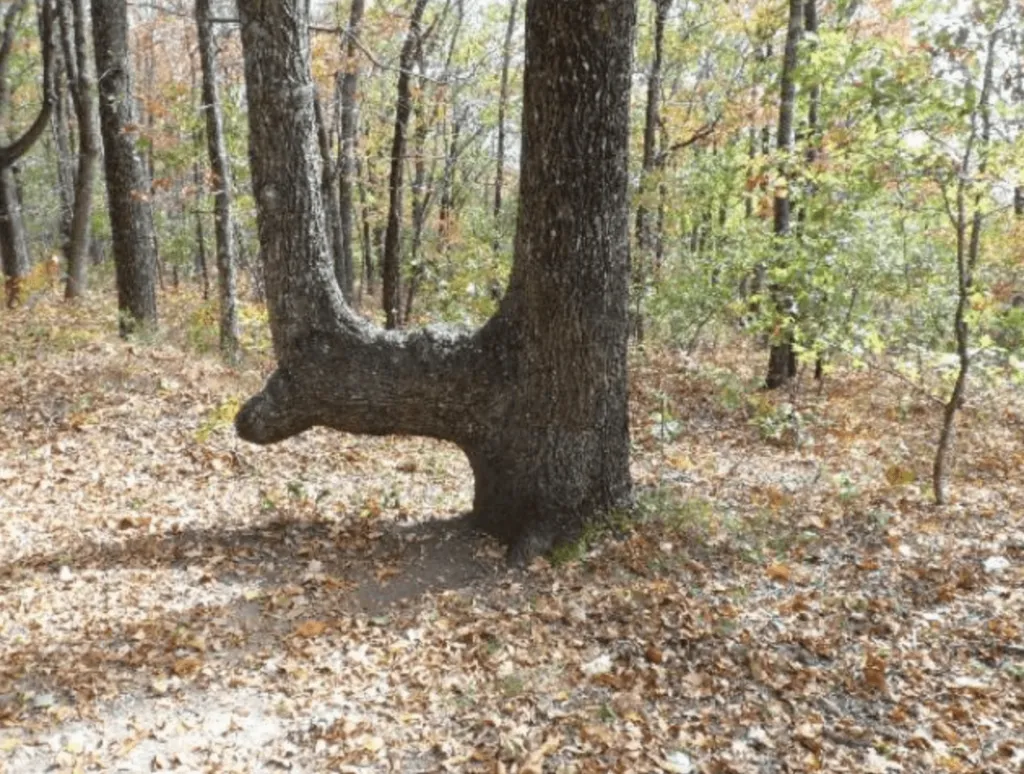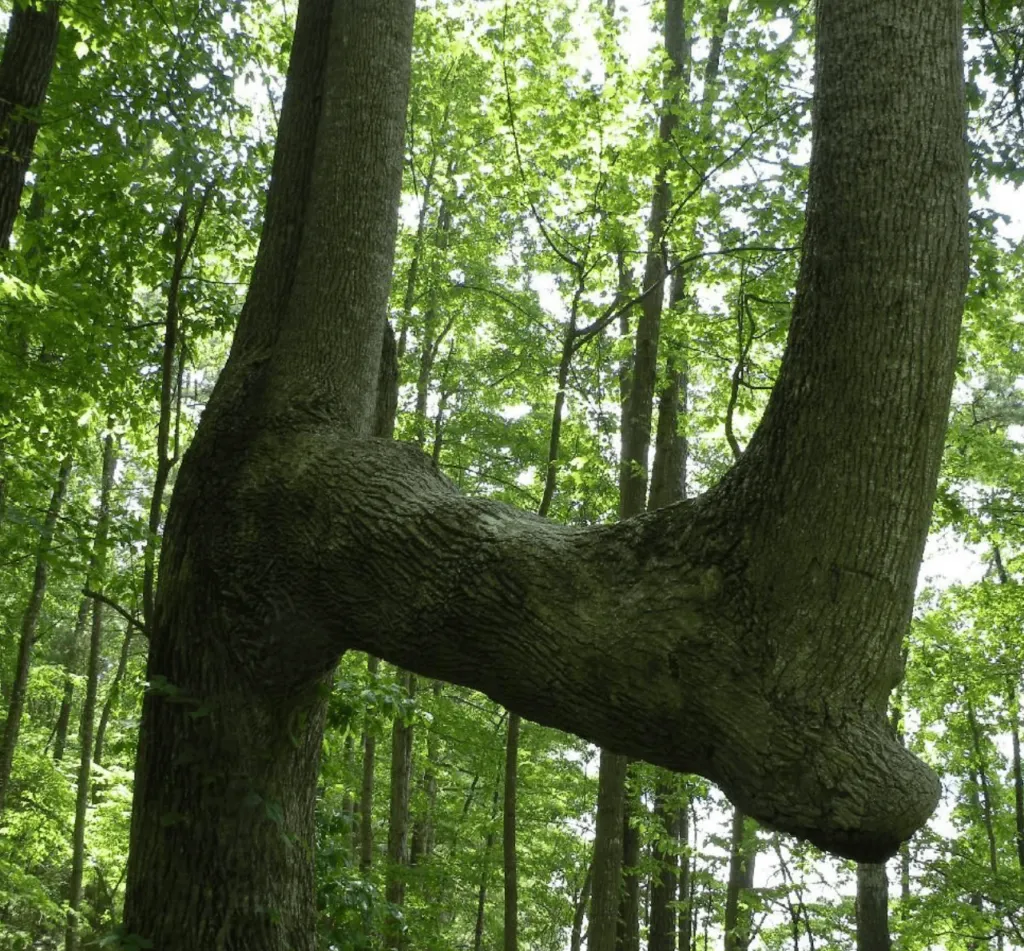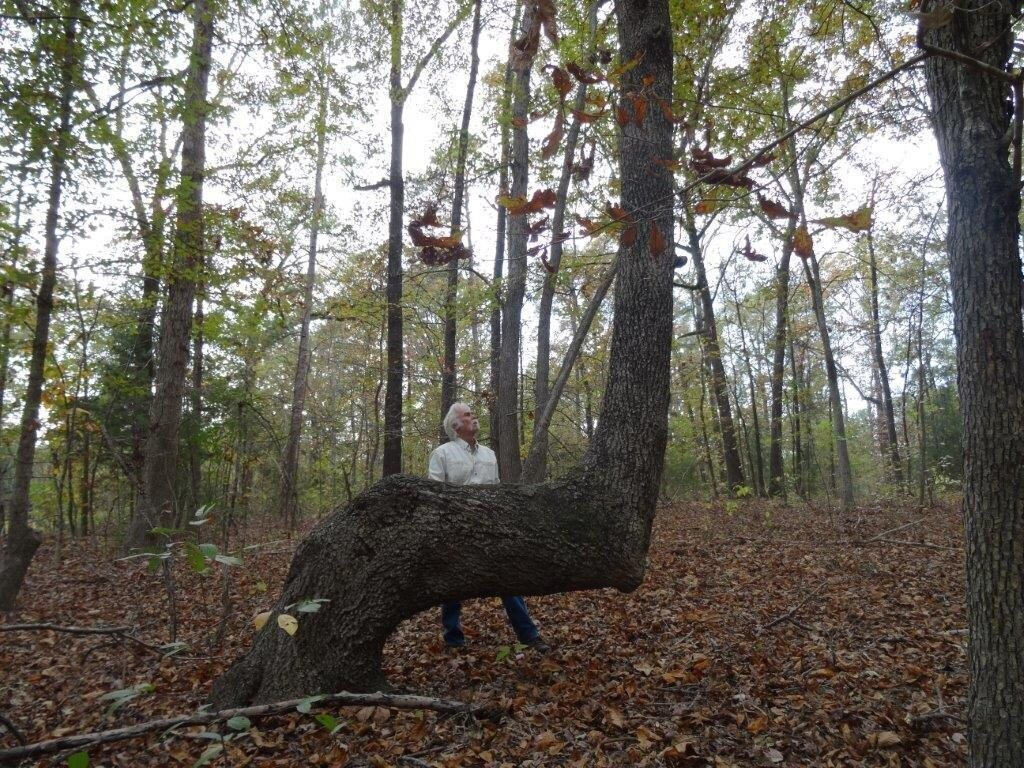In today’s world, finding our way through forests is as simple as opening a GPS app or unfolding a map. But centuries ago, navigating vast, uncharted wilderness was a far more challenging task. How did Native American tribes traverse these rugged landscapes without modern technology? The answer lies in a unique and ingenious method—bent trees.
These trees, carefully shaped by indigenous people, served as living signposts, guiding travelers to water sources, food, and safe trails. They stand today as silent witnesses to a fascinating history of ingenuity and survival.

Discovering Ancient Trails Through Bent Trees
Native American tribes developed a method of creating trail markers by bending young saplings in specific directions. This wasn’t just an act of convenience; it was a deliberate way to ensure that crucial pathways were clearly marked for generations to come.
How the Trees Were Bent
Tribes would bend a young tree by inserting a branch into a hole or tying it down with straps, shaping it into a distinct curve. Over time, the tree would grow into this new form, creating a permanent marker. The process often left scars from the straps used to bend the tree, providing modern observers with clues to their historical origins.
Recognizing Man-Made Features
While some wild trees naturally develop irregular shapes, bent trees often have specific, distinguishing features. These include pronounced notches or “noses” at the bend’s end, making them easily identifiable as intentional creations rather than the result of natural forces.
Living Historical Monuments
Many of these bent trees date back 150 to 200 years, standing as resilient testaments to Native American resourcefulness. They played an essential role in navigating harsh terrains and connecting communities.
Guiding Through the Wilderness
Bent trees were more than just navigational aids. They served as guideposts leading travelers to critical resources like water, food, and shelter. In some cases, they marked sacred sites or areas of cultural significance.
Silent Witnesses to History
Over the centuries, these trees have grown into ancient giants. They now bear the marks of time, gnarled and weathered, yet standing tall as living monuments to a bygone era. Each tree holds untold stories of survival, exploration, and community, offering us a glimpse into the lives of those who came before us.
Preserving Our Living History
Recognizing the historical and cultural significance of bent trees is crucial for preserving them for future generations. Thankfully, efforts are underway to map and protect these remarkable markers.
The Mountain Stewards Initiative
The Mountain Stewards organization has taken on the task of cataloging bent trees across the United States. Their website documents over 1,000 bent trees, providing detailed locations and historical insights. This initiative allows researchers, history enthusiasts, and the general public to connect with these living pieces of history.

Why Preservation Matters
These trees are more than relics; they are living symbols of human ingenuity and connection to nature. Protecting them not only honors the legacy of the Native American tribes who created them but also ensures that future generations can learn from this incredible intersection of nature and culture.
The Cultural Significance of Bent Trees
Markers of Unity and Survival
For Native American tribes, bent trees represented a shared language of navigation and survival. They symbolized unity across regions, as these markers transcended tribal boundaries to provide guidance for anyone who understood their meaning.
A Legacy of Resourcefulness
The creation of bent trees showcases how indigenous people worked harmoniously with nature, using the environment itself as a tool for survival. It’s a lesson in sustainability and adaptability that remains relevant today.
How You Can Explore This Living History
For those fascinated by these remarkable trees, there are plenty of ways to engage with their history and appreciate their enduring presence.

Find Bent Trees Near You
Visit the Mountain Stewards website to discover bent tree locations across the country. Many are found in state parks, hiking trails, and forests, offering a unique opportunity to connect with history during your outdoor adventures.
Learn and Share
Spread awareness about these natural markers by sharing their history with others. Encourage friends and family to explore bent trees and appreciate the legacy they represent.
A Lasting Tribute to Human Ingenuity
The bent trees of North America are more than curious shapes in the wilderness—they are symbols of human ingenuity, resilience, and our connection to the land. Crafted with care and purpose, they remain as enduring reminders of how Native American tribes thrived in harmony with nature.
Preserving these trees and their stories is not just about honoring the past; it’s about ensuring that their lessons and beauty continue to inspire us in the future. So the next time you wander through a forest, keep an eye out for these silent witnesses to history. You might just find yourself walking in the footsteps of the ancients.


